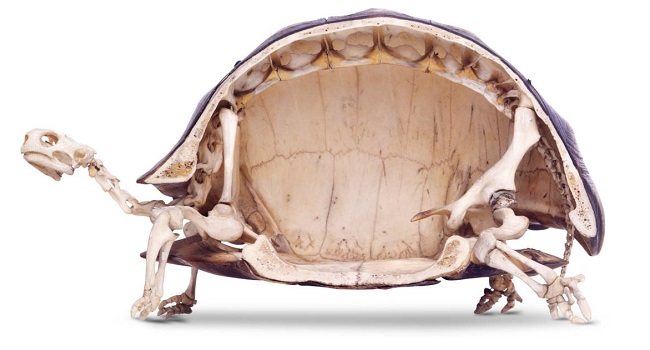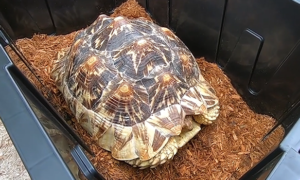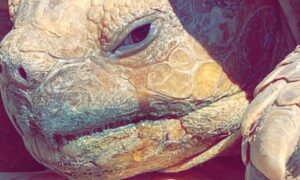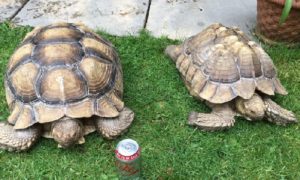If you haven’t noticed, sulcata tortoises have shells. But unlike hermit crabs, a tortoise’s shell is a part of its skeletal system. Your sulcata tortoise shell contains two layers and two parts.
Layers of a Sulcata Tortoise Shell
A tortoise’s shell is a part of its skeleton. The tortoise shell is made of two layers – an inner bony layer and a layer of keratin.
The inner bony layer of a tortoise shell encases the body and protects the vital organs. About 50 different bones make up the inner bony layer of a tortoise shell. The bones are linked together to make the shape of the shell.
The layer of keratin is the layer on top of the shell. This layer makes up the individual scutes.
The growth lines in-between the scutes are essentially joints that reinforce the overall strength of the shell. A tortoise who is growing healthily will have a smooth shell.
The outer layer of keratin has blood vessels and nerve endings, meaning the shell can bleed and injuries to the tortoise shell can be painful.
Parts of a Tortoise Shell
A sulcata tortoise shell is composed of two main parts – the carapace and the plastron.
The carapace of the shell is the top of the shell, where the scutes are. The plastron is the bottom underbelly of the shell.
The carapace is made of about 50 bones – the ribs and vertebrae. The plastron is the fusion of the clavicles and portions of the ribs. A “bony bridge” connects the two halves.
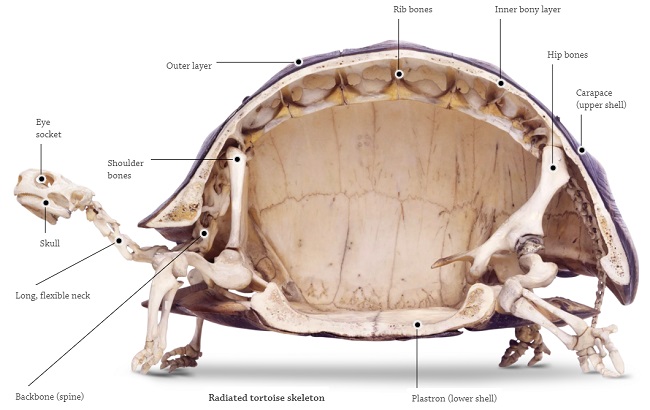
Sulcata Tortoise Scutes
There are five different categories of scutes on the carapace.
- Nuchal – the scute directly above the head
- Supracaudal – the scutes directly above the tail
- Vertebrals (Centrals) – line of scutes in the center – head to the tail
- Costals – run next to, and on both sides of the Vertebrals
- Marginals – around the bottom of the carapace next to the Costals and attach to the “bridge”
Sulcata tortoises DO NOT have a nuchal scute, but they have the other four categories of scutes. The missing nuchal scute is the best differentiation between sulcata tortoises and gopher tortoises.
There are six types of scutes on the plastron. Each category has two scutes. Starting from the head moving down to the tail we have:
- Gular
- Humeral
- Pectoral
- Abdominal
- Femoral
- Anal
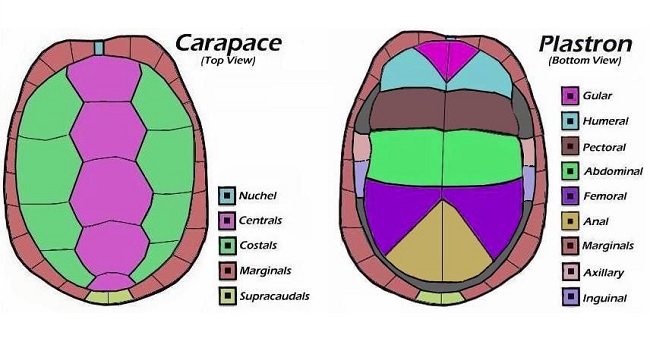
Sometimes a sulcata tortoise will have extra scutes or split scutes. This is often called split scutes.
Tortoise Shell Growth
As the tortoise grows, so does the shell. As the shell grows, new keratin growth creates growth rings in-between the scutes. The growth rings can help estimate how old a sulcata tortoise is, but counting the rings is not 100% accurate.
Tortoises can have multiple growth spurts in a year, based off climate changes and food availability. And as a tortoise ages, the growth layers can wear or fade, making it hard to calculate the growth spurts.
Wild sulcatas are likely easier to age based on their growth rings, but it is harder to identify the age of captive sulcata tortoises based on the growth rings.
You can count the large growth rings as growth spurts, but not necessarily as yearly growth.
Common Tortoise Shell Illnesses
Pyramiding. Pyramidal growth syndrome occurs when the scutes grow in an pyramid shape. Potential causes of pyramiding in sulcata tortosies include improper humidity, low fiber, inadequate calcium or other dietary deficiencies. Once the scutes start to pyramid, it can not be reversed.
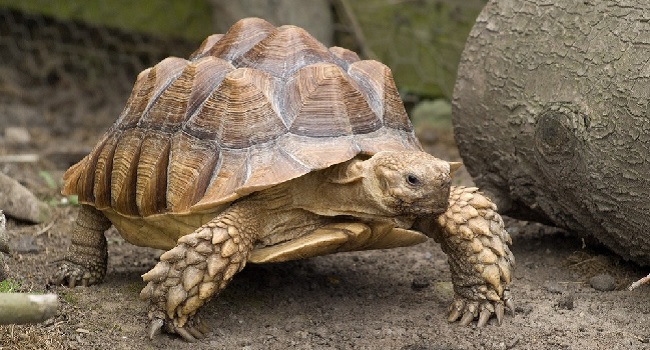
Metabolic Bone Disease. MBD and pyramiding go hand in hand, but MBD can also cause softening and malformation of the bones. MBD can be fatal if not diagnosed and treated. Husbandry and diet are often the cause.
Sloughing of Scutes. Although it is rare, renal failure can cause a tortoise to slough off his scutes. The kidneys help maintain proper calcium and phosphorus levels in the blood. If the phosphorus level is too high, the body will compensate by moving calcium from the bones to the blood, causing the shell to become soft and slough off the shell.
Shell Rot. Shell rot can be superficial or deep. They’re often caused by poor husbandry and should be diagnosed and treated quickly. Shell rot often requires a topical and/or injectable antibiotic.
Injuries to the Shell. Injuries from animal bites, burns or other accidents can cause infection and misshapen growth as the scutes heal.

